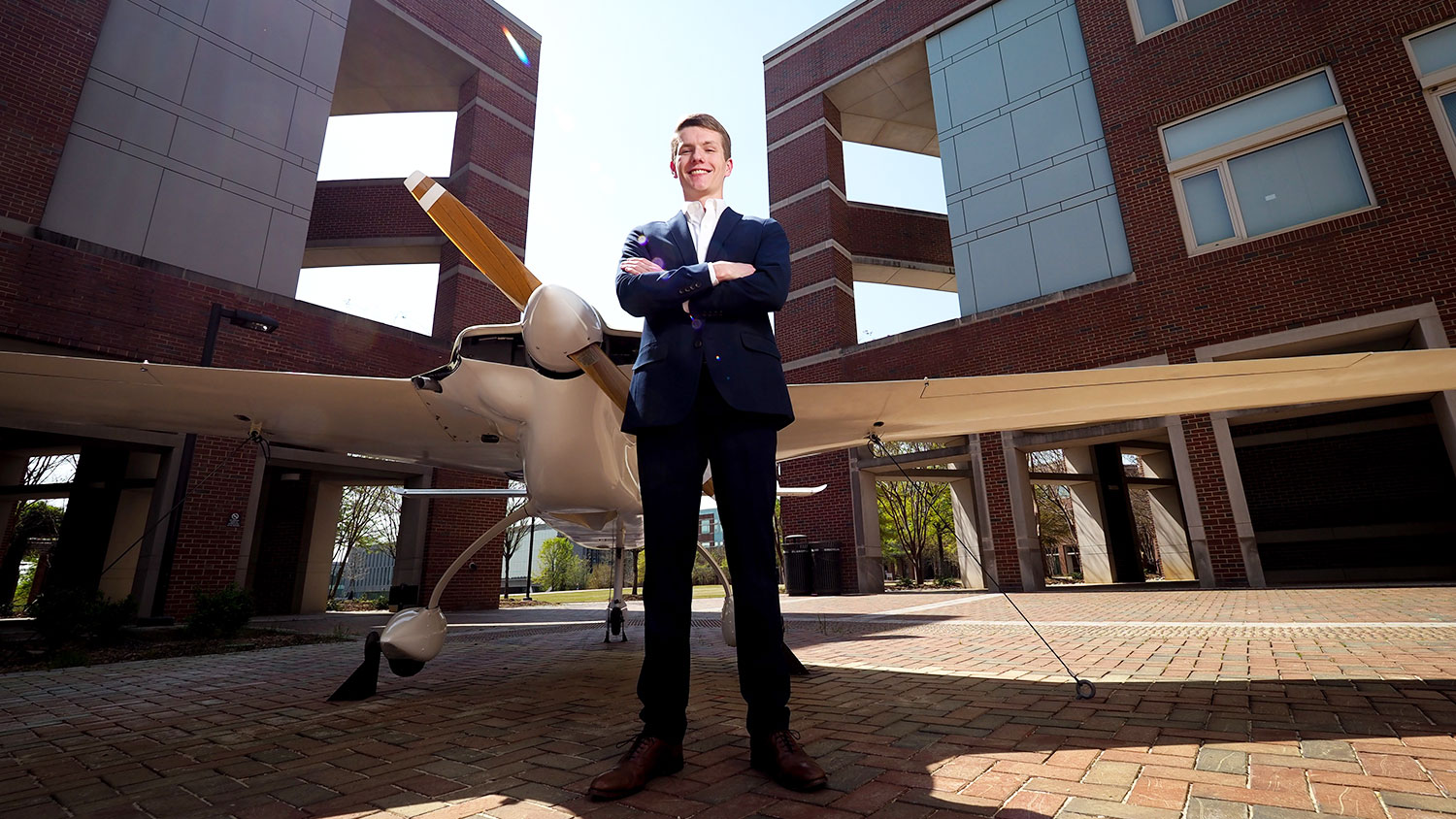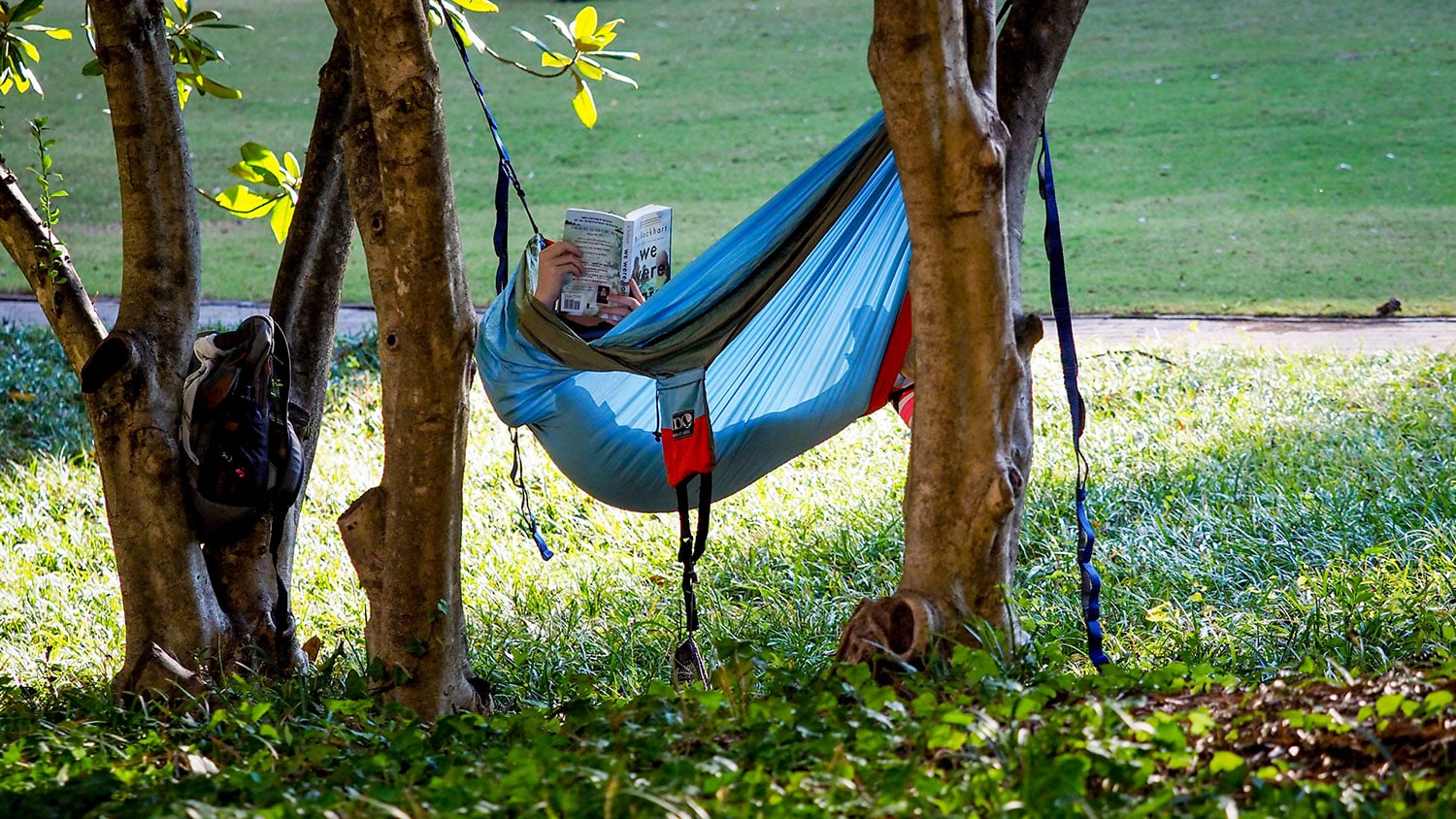Winging His Way to Success
Andrew Mistele, an aerospace engineering student — and now Goldwater Scholar — is conducting research that could lead to improvements in fields such as energy efficiency and drone design.

If you’ve ever wondered why your plane waits on the runway for a while after another takes off, Andrew Mistele has the answer: vortices. A vortex happens when high pressure under the wing curls over the edge and tries to equalize with the lower pressure above the wing, causing the air to swirl like a whirlpool.
“It can cause a plane to stall or crash during takeoff,” Mistele explains. “You have to wait for these vortices to dissipate.”
Mistele, an aerospace engineering student, studies these phenomena, although not in the context of jetliners and runway traffic. His research into vortices, their formation and their effects has broader implications in other fields such as energy efficiency and drone design — research that last month earned him the prestigious Goldwater Scholarship.
“It took me a while to wrap my head around it. It was very exciting,” he says. “It’s a great honor.”
Research in Motion
A key component in the formation of a vortex is an airfoil. Slice through a plane’s wing parallel to the fuselage — the main body of an aircraft — and that two-dimensional cross-section is the airfoil. In subsonic aircraft such as commercial planes, generally they are shaped like horizontal tear drops.
“The aerodynamics of a wing and how it generates lift and drag are largely dependent on its three-dimensionality, its sweep and its shape,” Mistele says. “But by studying airfoils, you can better design your wings’ behavior.”
The meat of his studies is how vortices affect airfoils and change their lift loads, drag loads and behavior. Mistele uses low-order modelling to conduct his research; he takes aerodynamic theory, simplifies and adjusts the variables and numerical values, and calculates the circulation of air around the airfoil in a way that mimics its behavior in real life.
This technique provides a good starting point for analysis. The results can then go through computational fluid dynamics and wind-tunnel experimentation, two methods of analysis that provide more accurate information than the low-order model but require more time and sophisticated equipment. They also don’t provide as much insight as low-order modelling.
“A computational fluid dynamics simulation or a wind-tunnel study can tell you an airfoil is generating so much lift and so much drag, whereas our numerical methods can tell you, ‘This vortex in the airflow is changing the lift of this airfoil by this much.’ Or the fact that it’s twisting and rising or falling is affecting the lift and drag this much,” Mistele says.
Experiments and Ideas
Mistele isn’t trying to build more effective aircraft himself; instead, he’s building a body of research with multiple practical applications, such as creating more energy-efficient wind turbines or faster, nimbler unmanned aerial vehicles (UAVs). UAVs typically rely on propellers to function, but Mistele says there’s growing interest in creating ones that mirror how birds and insects fly, referred to as biomimetic flight. He’s experimented with the idea himself.
“One of the things I worked on recently is putting two wings really close to each other and having them flap in key, kind of like a dragonfly,” he says. “Depending how close together they are in their flapping frequencies, that rear airfoil can extract energy from those vortices shed by the front airfoil and actually create thrust more efficiently than a single airfoil could on its own.”
Mistele published his findings in a paper, Inviscid Model for Unsteady Multi-Airfoil Configurations with Leading-Edge Vortex Shedding, presented last year at an American Institute of Aeronautics and Astronautics conference. Academic advisor Professor Ashok Gopalarathnam and postdoctoral researcher Arun Vishnu Suresh Babu, both of the Department of Mechanical and Aerospace Engineering, joined him as authors.
“That paper was really more about a new method that we have derived and implemented for studying these interactions that’s different than people have done before,” Mistele says. “It’s really more of a methodology with some verification and validation than an in-depth study of the physics of these phenomena.”
‘A Lot of Potential Paths’
Mistele is still mulling his options after he earns his degree from NC State. He might enter the Department of Mechanical and Aerospace Engineering’s accelerated master’s degree program. He’s thinking about applying for Stanford University’s Knight-Hennessy Scholarship. Or maybe he will work for a couple of years before going to grad school.
“I’m trying to keep my options open,” he says. “I haven’t made a hard decision, but I know there are a lot of potential paths, and I think that the Goldwater’s going to help me pursue them.”
One option he has ruled out is teaching — although he is grateful for support he received from Gopalarathnam and Babu.
“I definitely wouldn’t have been in a position where I could have applied for this award without their support and having worked with them,” he says.
He is looking forward to networking with other Goldwater Scholars past and present. They congregate in a workspace in Slack to share ideas, support and advice.
“Being a part of that community is something that is pretty incredible that I’m looking forward to a lot,” he says.
- Categories:


